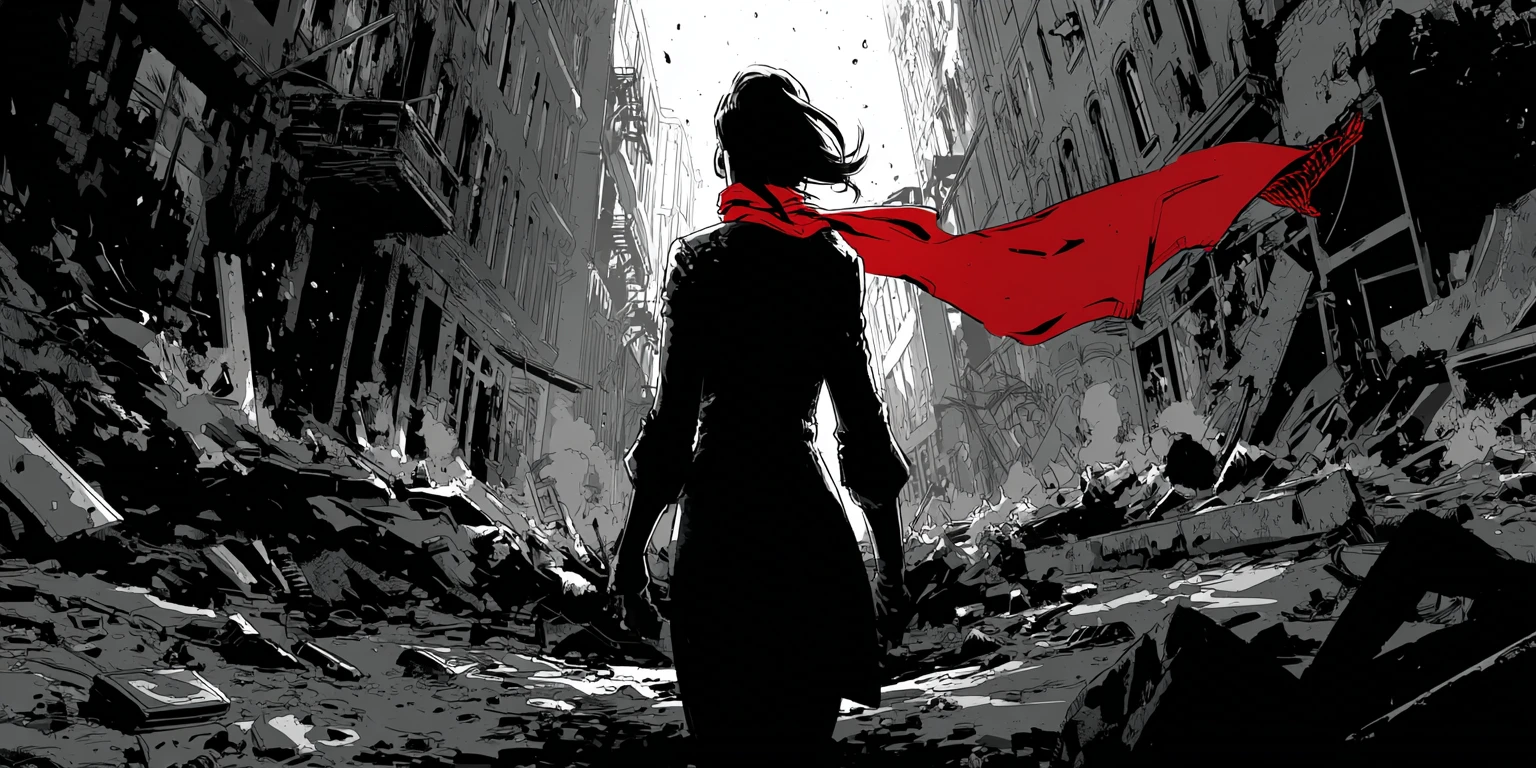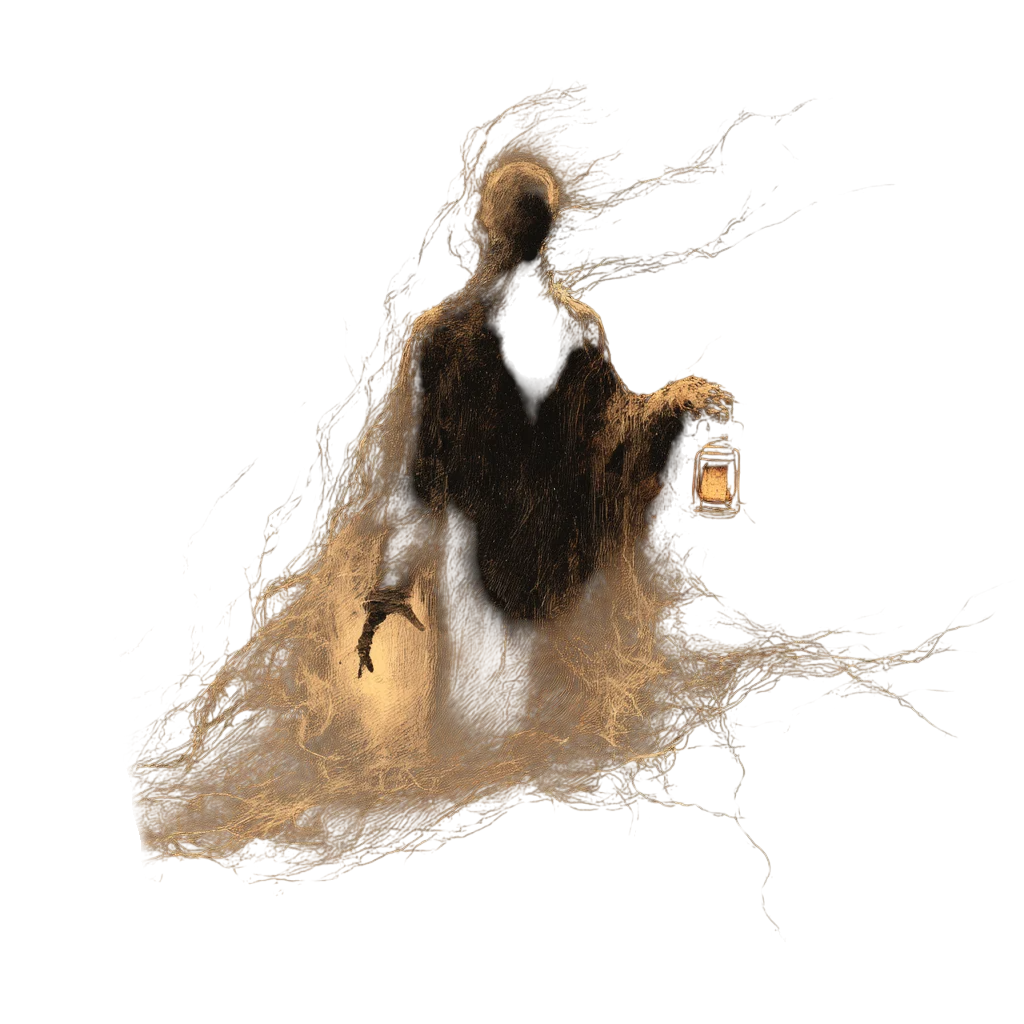Hope Fever
Introduction
"Hope is a lantern. It can light the road ahead, but in the darkness it can as easily make you a target."
Hope Fever, also known as the Brightening or Euphoric Dissociation Syndrome (EDS), is a new psychological condition that appeared after the Cataclysm; perhaps because it could not exist while the world still made sense. It is neither a plague, nor a possession. It is the mind’s final revolt against the truth of the world. It does not care for age or memory, afflicting both those who remember a green earth and warm rains, and those who only dream of such things.
It begins with smiling and can be easily overlooked, as the initial symptoms are mild. Survivors speak of homes they never had, meals they never ate, skies they never saw. Whether these visions are fragments of fractured memory or forged illusions of a desperate mind, none can say for sure. What is certain is that Hope Fever does not grant mercy. It steals the mind first, then lets the body follow, unraveling hope until only silence remains.
To witness it is to see a soul caught between two worlds: one foot in the ruin, the other chasing ghosts of light.
Stage I: A burst of Optimism
The first signs of Hope Fever are subtle, so much so that many mistake them for recovery. The afflicted begin to speak of purpose again. They walk with steadier steps. They smile. Some call it resolve, others a rekindled spirit. In the wreckage of the world, who wouldn’t welcome such change?
Yet beneath this renewed energy lies something else: disconnection. Patients no longer speak of the world as it is, but as it could be. They describe small, vivid joys that feel just around the corner. A sunrise they haven’t seen. A letter they think will arrive. A warm, home-cooked meal they can almost taste.
None of these things exist.
During the first stage, the mind is reaching out to hope, desperate for something brighter among the ruins; beginning to believe in the mirage.
“I woke up early today. Just felt… good. I’ve been thinking we should fix the watchtower. Maybe clear the old rail lines too, make space for a garden, you know? I know it sounds crazy, but I swear the air smelled cleaner this morning. Maybe the weather’s shifting.”
Zone-5 report, entry 03. Female survivor, estimated age 30.
Subject displays increased energy, improved demeanor, unprompted optimism. No signs of known psychic influence. Describes sensory impressions not confirmed by external factors (e.g., “fresh air,” “clean light”). Associates weather patterns with moral recovery.
Team divided. Some view behavior as positive development. I suspect EDS. Monitoring recommended.
Stage II: A False World
By the second stage, the afflicted have began building a world of their own. Not all at once of course. Their "happy place" as some came to describe this stage, grows in fragments: a smell of bread where there is ash or laughter where there is the sound of flies.
The delusions are not hallucinations in the traditional sense, but substitutions. The mind replaces horror with memory, or worse with possibility. The brain does not forget the ruin; it simply chooses to look away. Survivors in this stage often become highly motivated, even charismatic. They may attempt to lead others into projects, plans, or expeditions driven by things that do not exist. Some believe their family is still alive in a nearby settlement. Others speak of cities with power, warmth, and song.
They are not dangerous because they are violent. They are dangerous because they are convincing.
“They’ll be coming from Dijon. That route’s still open, I know it is. I told Jonah to clear the landing pad. He doesn’t believe me, but he will. You’ll see. We just have to hold out one more day.”
Zone-5 report, entry 09
Subject insists Dijon - a cratered city long lost to the Veil - remains intact. Claims to have heard broadcasts from it during the night. No signal detected. Subject attempted to mark a landing zone using salvaged flares. Morale shift noted: two team members began stockpiling supplies for a “welcome party" following subject's instructions. Subject is now contained. Smiles constantly. No signs of fear.
Stage III: Departure
“She’s out back trimming the rosemary. Said we should dry some for the winter. I finished painting our fence this morning. Yellow, like we had agreed. We changed curtains yesterday; these ones finally catch the light right! I’m making lentils tonight. And then we can sit in the porch. It’s good here. You should stay awhile.”
Zone-5 report, Entry 41.
Subject describes her surroundings with quiet conviction: rosemary drying on the line, freshly painted fence, dinner preparations. Every detail is precise. Familiar. She speaks to her partner as if present in the room. Her partner was confirmed deceased two years ago.
When offered water today, she declined, smiling: “We’ve got plenty in the cistern.”, she said. I attempted a soft correction. She didn’t blink.
Vitals are deteriorating - low intake, shallow breath - but mood remains calm. Eyes are clear. Focused. Somewhere else.
She smiled as I stood. Told me to stay for dinner. Said Emilie made too much.
I marked her status as stage-three, full dissociative merge.
…Mary is not coming back.
In this final stage, Hope Fever consumes the last shreds of clarity.
The afflicted no longer live in the present but are trapped in a shifting dreamscape: a warped world stitched together by memory and desperate wish.
Their speech fragments, voices echoing conversations long past or never held. They wander endlessly, searching for doors that do not open, places that do not exist. Some claim their consience to have crossed into the Veil itself. Others believe they are simply vanished.
Hope husks they call them.
Their bodies weaken, eating less, resting less, driven by the fever’s final cruel surge: to become one with the utopia they chased, even if it means losing everything else.
Beneath the Brightening
Hope Fever’s origin remains one of the deepest mysteries haunting survivors and scholars alike. Its very nature defies simple explanation, spawning theories as varied and fractured as the world itself.
Some argue it is a natural neurological response to prolonged trauma and unbearable grief. The mind, overwhelmed by relentless loss and horror, fractures to preserve a sliver of light. This psychic fracture manifests as vivid illusions and euphoric dissociation; an instinctive, desperate bid to endure the intolerable by retreating into a fabricated sanctuary. Others speculate the Veil’s insidious influence. The ever-present Veil Tears spread a corruption that seeps not only into the physical world but into the minds of survivors. It warps memories, alters perceptions, and distorts reality, sowing seeds of false hope to ensnare fragile souls in illusions that keep them trapped between worlds; never fully alive, never truly gone.
Yet among these theories lies another whisper, one feared by even the most resilient people: the hand of the Charon's Sepulchers. The Quiet Ones, servants of Charon’s apocalyptic mercy, who believe the world must first fall silent before it can be reborn. It is believed that Hope Fever might be the result of a grim ritual of theirs, one designed to offer a form of quiet release.
According to this belief, Hope Fever is the Sepulchers' twisted mercy: an illusion bestowed upon those too broken to face death’s harsh reality. By weaving a dream of peace, home, and safety, they ease the suffering, dull the pain, and soften the mind’s final descent. The fever becomes a veil over the soul, guiding the afflicted gently toward the beyond, away from terror and resistance.
Yet, no consensus has been reached. It may be a mixture of all these forces that conspire to birth this tragic new condition. But one truth remains clear: Hope Fever is a final snare from which there is no waking out, a descent into a delusion as beautiful as it is deadly.
Hope Husked
Hope Fever enters gently in the mind, like morning light through a cracked shutter, offering comfort to the weary and ruin to the watchful. It weaves memory into refuge, pain into song, and sorrow into something like peace. For some, it is a final mercy. For others, the cruelest lie. Those who vanish in its grip do not thrash or rage. They smile. They hum lullabies no one taught them. They walk barefoot through ash and swear they feel grass. They forget the ruin not because it heals, but because remembering is painful.
Attempts to anchor them in truth rarely succeed. Names lose meaning. Warnings fade. They drift, quietly, into a world that never, was but feels more real than the one that remains.
In the end, if reality no longer wants you...








Jeez, even displaying hope could very well be a disease? That's just awful :(
It's a hard world, what can I say?